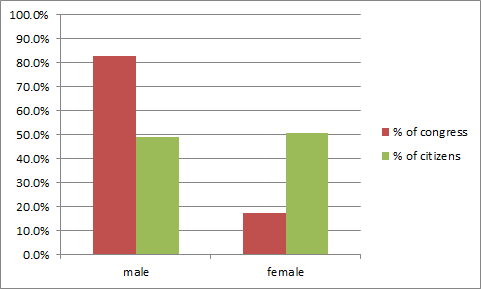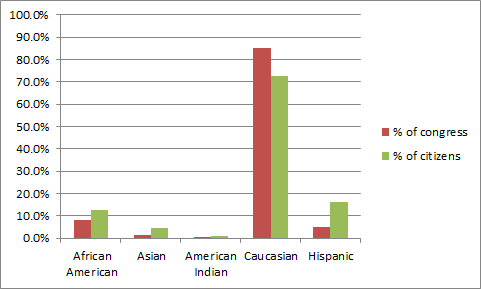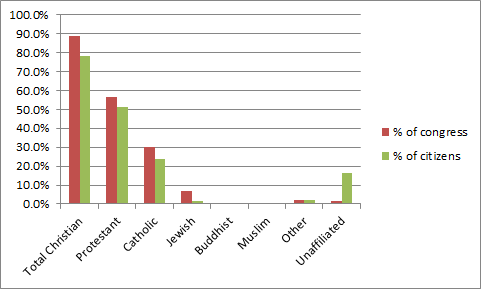This election season has many voters focusing on job creation and economic recovery. Despite the candidates’ vastly differing stances on social issues, the public seems deaf to any reasoning that doesn’t include the words, “debt,” “jobs,” or “budget.” Here’s why my vote is not being decided by fiscal policy.
Same-Sex Marriage
The US Supreme Court declared in the decision of Loving v. Virginia that marriage is a right. The Equal Protection Clause of the 14th Amendment guarantees that laws must be evenly applied to all citizens. So, given marriage, a man may marry a woman; while, any law preventing a woman from doing the same (marrying a woman) is denying that woman equal protection under the law. A law that prevents a man from marrying a man denies that man the fundamental human right of marriage, protected by the Constitution of the United States. Those who argue that the phrasing “marriage to the opposite sex” is not a violation of the Equal Protection Clause would do well to read up on the unconstitutionality of anti-miscegenation laws decided in the above, Loving v. Virginia.
Coverage of Women’s Preventative Health
While our Constitution has an Equal Protection Clause, health concerns do not. Diseases frequently disproportionally affect individuals based on their ethnicity or sex. An employer who offers a healthcare plan that neglects women’s health is in violation of the Civil Rights Act of 1964, which prohibits workplace discrimination based on sex (and reproductive health issues), including compensation and terms/privileges of employment.
Social Vs. Fiscal
Above are just two examples of modern civil rights battles that have clear answers entrenched in hundreds of years of constitutional law. I may enjoy debate on the pros and cons of the 2008 bailouts and see truths on both sides, but America can have only one stance on the equality of all humans. Most economic plans have some shred of validity to them, and maybe we’ll be surprised by some positive effects even in the worst plan. Even if a politician’s economic plan is sure to bring the economy to its knees, people will persevere, and our economic landscape will evolve. Civil Rights, however, cannot be compromised, and anyone who claims otherwise is not worth a vote.

 And yet, according to the
And yet, according to the  The press release highlights the main public concerns. Amidst the rhetoric of appeals to children’s welfare, Markosek said, “People should have their hands on the wheel and be focused on the road when they are driving.” This offhanded conflation of focused drivers with hands-free drivers is the most glaring fallacy. With no other laws about where a driver’s hands can be, or what they can be touching, singling out cell phone use raises a red flag. If the purpose of the proposed law is to keep drivers’ hands on the wheel and eyes on the road, we expect to gain nothing by specifying an individual item that is not allowed to be in a driver’s hand, especially when there are several exceptions to that rule.
The press release highlights the main public concerns. Amidst the rhetoric of appeals to children’s welfare, Markosek said, “People should have their hands on the wheel and be focused on the road when they are driving.” This offhanded conflation of focused drivers with hands-free drivers is the most glaring fallacy. With no other laws about where a driver’s hands can be, or what they can be touching, singling out cell phone use raises a red flag. If the purpose of the proposed law is to keep drivers’ hands on the wheel and eyes on the road, we expect to gain nothing by specifying an individual item that is not allowed to be in a driver’s hand, especially when there are several exceptions to that rule. Echoed in all three of the quotes above is the fallacy that banning a single source of distraction will prevent distracted driving. This last quote perhaps recognizes that more needs to be done, but no further plan is discussed. The disconnect between intended goals and proposed legislation is growing enormously across the nation, and we’re paying for it with our liberties. In an era when
Echoed in all three of the quotes above is the fallacy that banning a single source of distraction will prevent distracted driving. This last quote perhaps recognizes that more needs to be done, but no further plan is discussed. The disconnect between intended goals and proposed legislation is growing enormously across the nation, and we’re paying for it with our liberties. In an era when  Examine the goals, and work to meet them in a consistent manner. The fervor is over cell phones, but the justification is being cited as “distracted driving”. With distracted driving playing a part (not necessarily being the cause) in
Examine the goals, and work to meet them in a consistent manner. The fervor is over cell phones, but the justification is being cited as “distracted driving”. With distracted driving playing a part (not necessarily being the cause) in 


